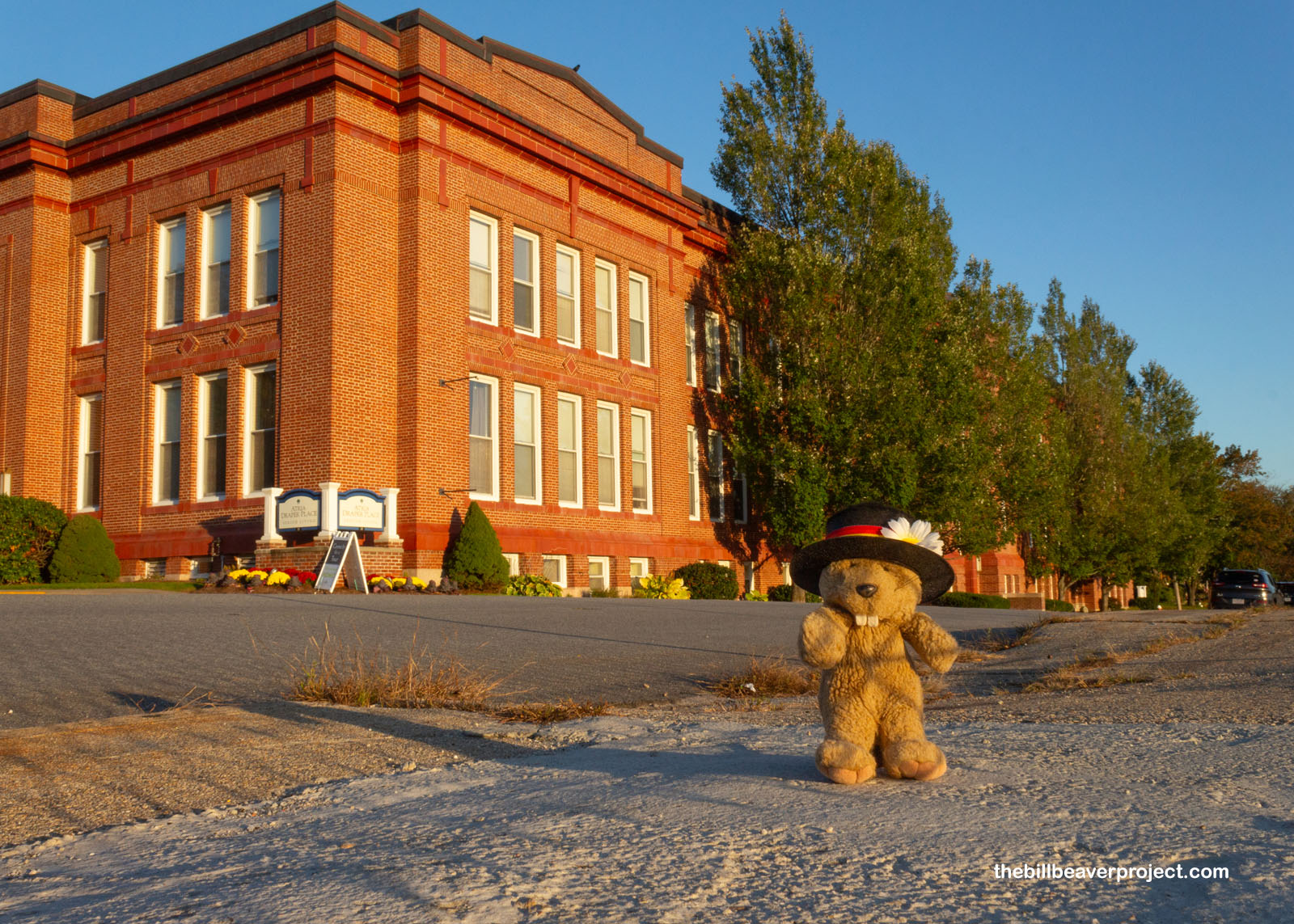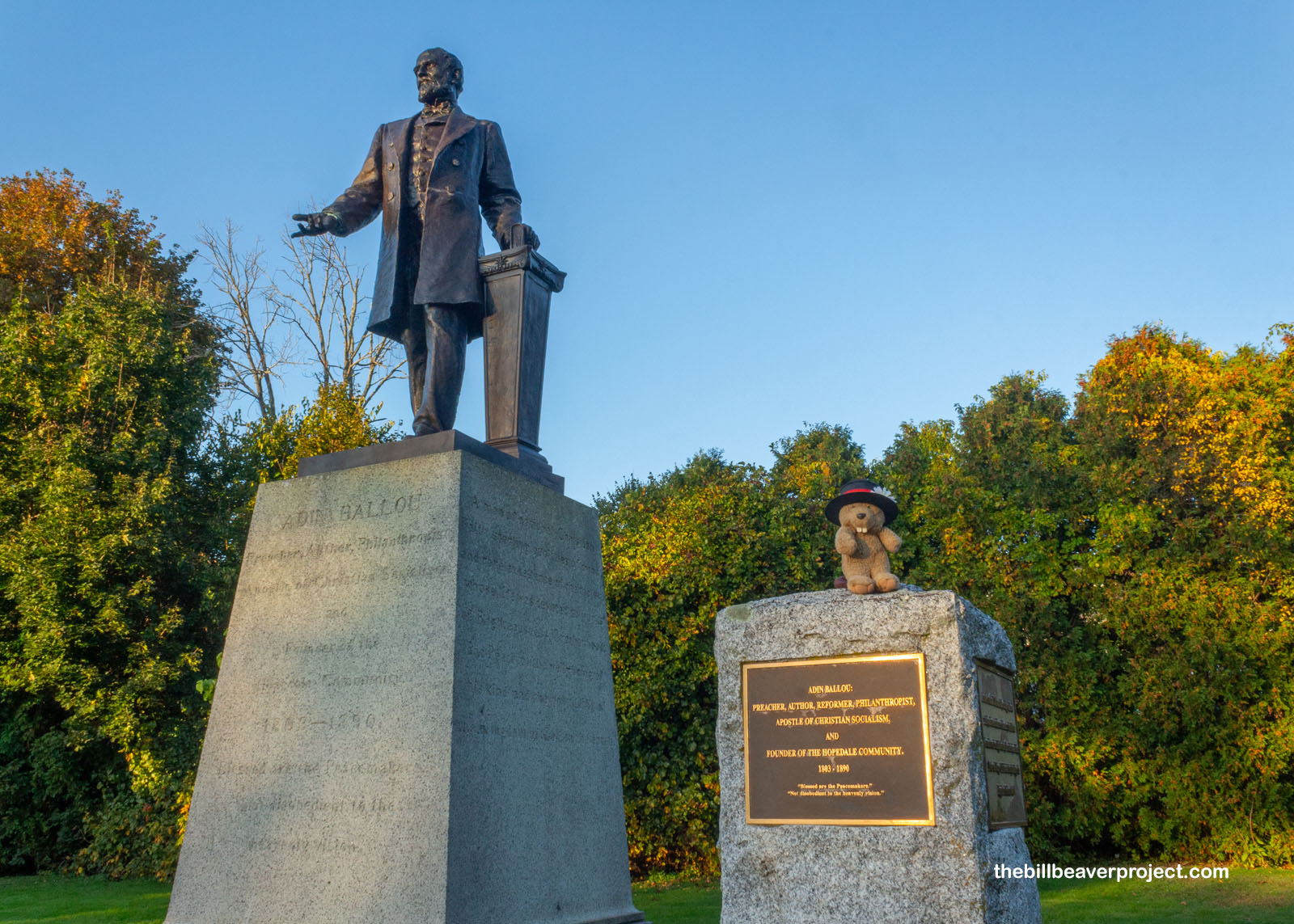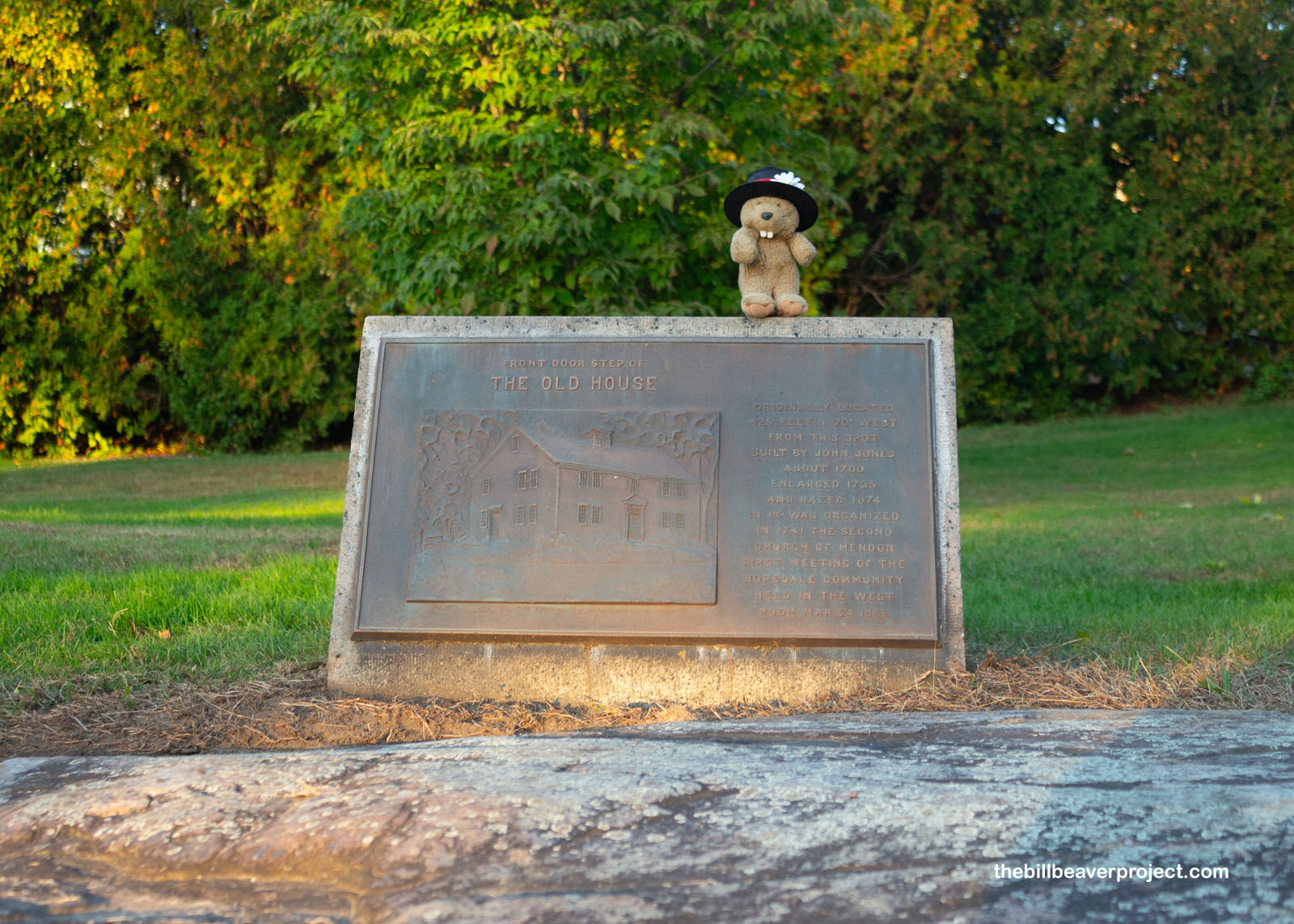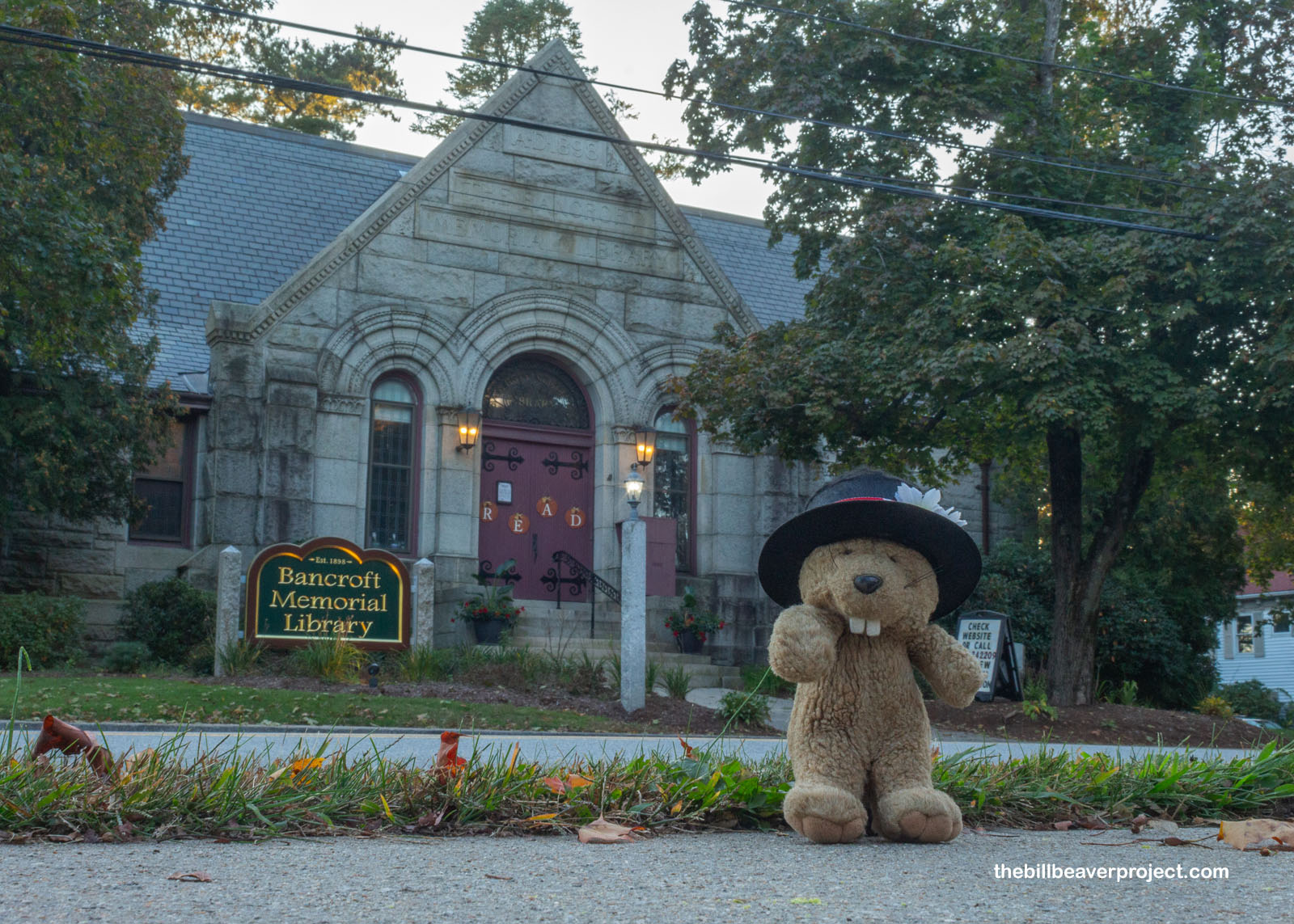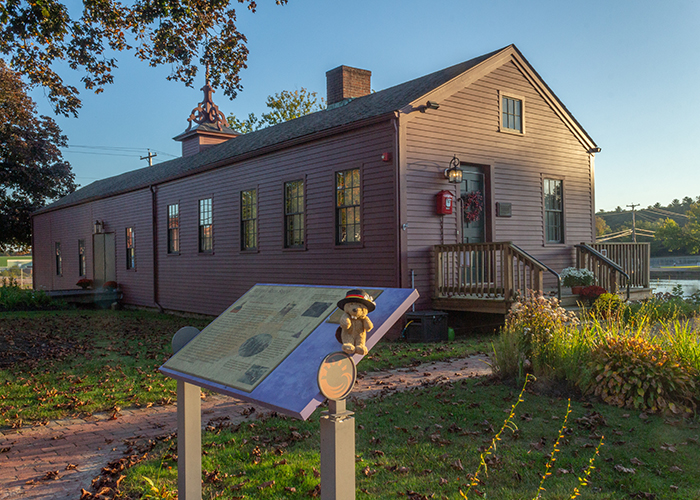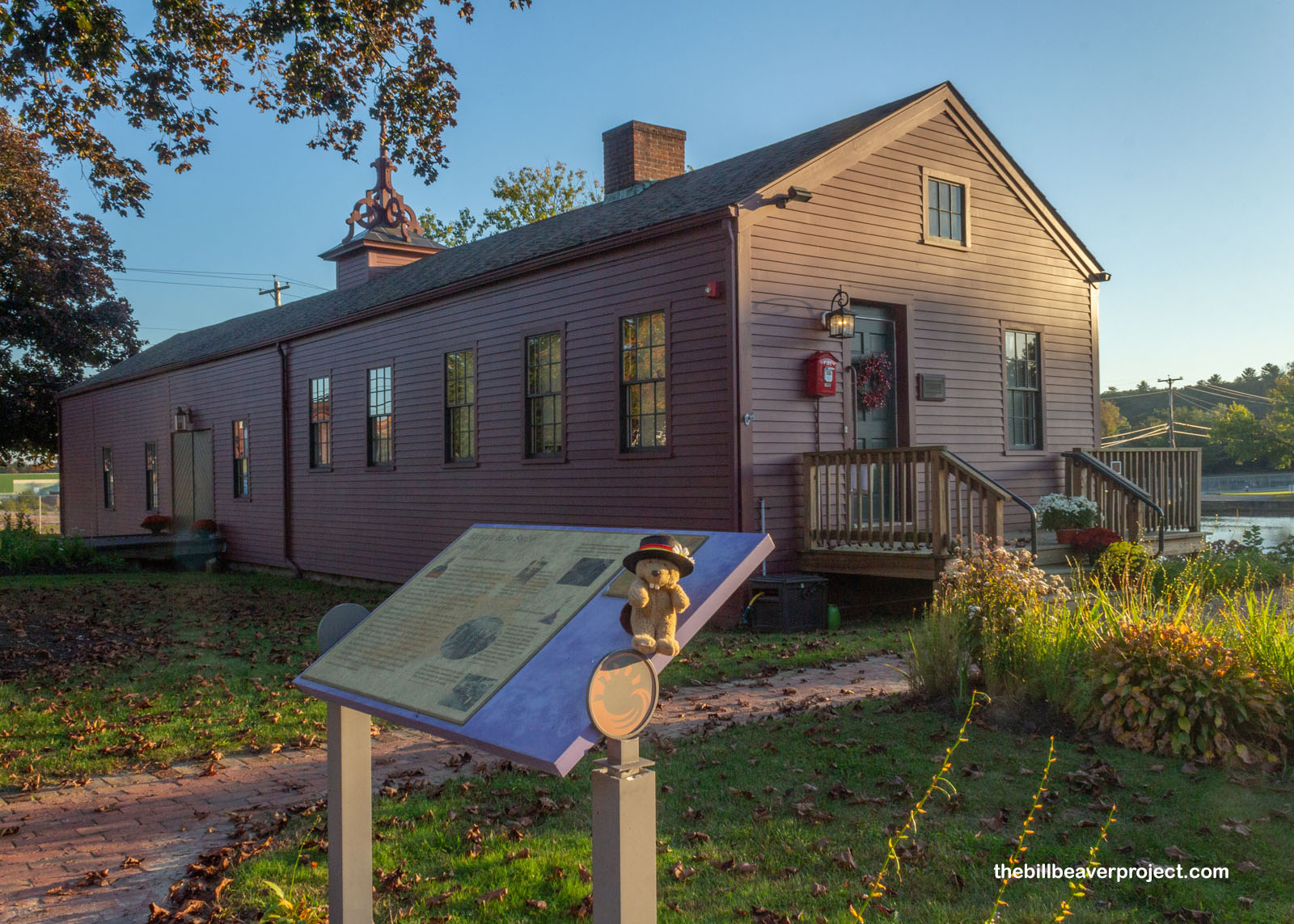
What Is the Hopedale Village Historic District?
Hopedale Village has the odd distinction of being a utopian commune converted into a company town!
What Makes It Historical?
In 1841, Restorationist Universalist clergyman, Reverend Adin Ballou, led seven or eight families into the countryside to found a Christian socialist settlement that he called the Dale. Here, they’d practice temperance and communal living with a strong abolitionist philosophy. Originally, everyone in the Community lived in one home, the Old House, with one family per room, but over the next ten years, the Community of Hopedale expanded to 50 houses on 600 acres of land, with mills, shops, farms, and a cemetery, which was meant to sustain everyone collectively. However, disputes arose over who pulled their weight and who got what money!
Enter the Draper Brothers: Ebenezer, who arrived in 1842 and George, who arrived 1853. Together, they formed the E. D. & G. Draper Company, which made and sold textile machinery! Though the Drapers bought shares in the Community to keep it going, it was not well managed, and it went bankrupt! So the Drapers, as majority stock holders, bought Hopedale and turned it into a company town. George Draper had experience managing other mill towns, like Lowell, and he led the overhaul of Hopedale from architecture to infrastructure!
When Ebenezer retired in 1868, George and his sons, one at a time, joined forces to build George Draper & Sons, a nearly depression-proof business with a monopoly on spindles! George Draper’s son, William, was a brigadier general of volunteers during the Civil War, and served a term in Congress and an ambassadorship to Italy! It was William that promoted his foreman, James Henry Northrop’s, automatic loom in 1894, revolutionizing the textile industry! Able to change thread bobbins automatically, this machine took the one-worker-to-one-machine ratio and made it one-worker-to-one-hundred-machines! Needless to say, hours were long and wages low, and the workers didn’t take too kindly to George’s brother, Eben, who, as governor of Massachusetts, consistently opposed reduction of work hours, and so the workers of Hopedale went on strike from April to July 1913!
Today, the mills of Hopedale have all been razed, but you can still see some historic stuff in a walk about town, like the Drapers’ Little Red Shop, the front door step of the Old House, and the Bancroft Memorial Library, built by Draper V.P., Joseph Bancroft for his late wife!
How Can I #HelpTheHelpers?
- Volunteer with the Blackstone River Valley National Heritage Corridor!
- Donate to the Little Red Shop Museum!
- Be a responsible visitor! Remember the old adages: Pack out what you pack in! Take nothing but pictures and leave nothing but footprints!
How Do I Get There?
12 Hopedale St
Hopedale, MA 01747
(Take Me There!)
When Should I Visit the Park?
The Little Red Shop Museum is open every other Sunday from 1:00 PM to 4:00 PM and most Wednesdays from 6:00 PM to 8:00 PM!
More Photos
